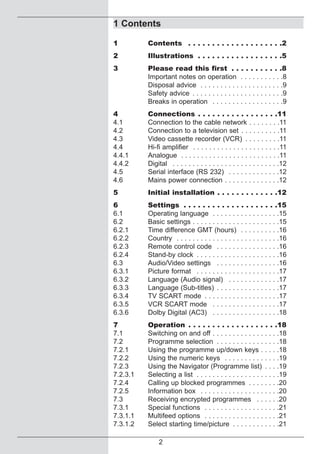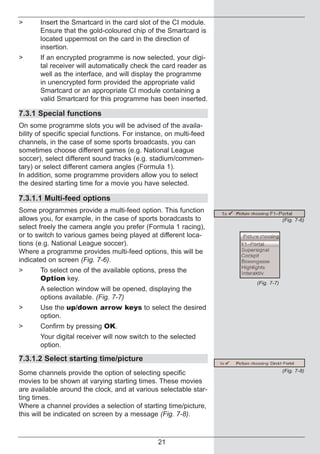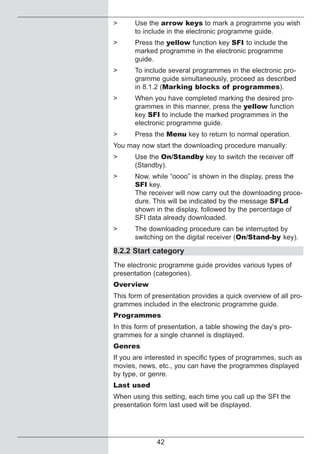Embed presentation
Download to read offline


























































The document provides instructions for operating the TechniSat DIGIT MF4-K digital receiver. It includes sections on connections, initial installation, settings, basic functions like selecting channels and adjusting volume, as well as more advanced functions like programming the electronic program guide and setting parental controls. The document contains illustrations of the receiver and remote control, and provides troubleshooting tips and technical specifications.

























































